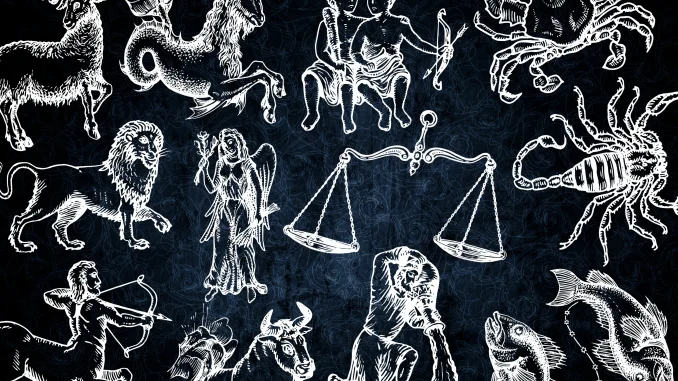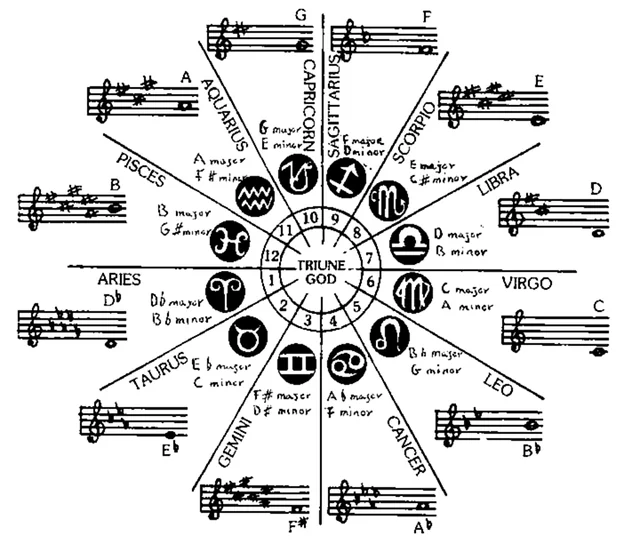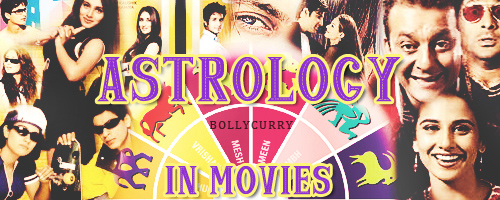
Astrology, the ancient practice of divining meaning from the movements and positions of celestial bodies, has long been a source of fascination and controversy. From its inception as a mystical art to its modern integration into various forms of media, astrology has undergone a transformation, evolving from a marginalized practice to a mainstream cultural phenomenon. This article explores the prevalence of astrological symbols and metaphors in popular culture, specifically within films, music, and literature. It analyzes how these representations influence public perception of astrology and discusses the factors contributing to astrology’s transition from the fringes to the forefront of contemporary society.
Common Astrological Symbols and Metaphors in Media
In popular culture, astrology often serves as a rich tapestry of symbols and metaphors, subtly woven into the narratives of films, songs, and novels.
- Films: Astrological themes frequently manifest in cinematic narratives through character traits and plot twists. For instance, in “The Seventh Seal” (1957), directed by Ingmar Bergman, the character of Death, played by Max von Sydow, engages in a chess game with a knight named Antonius Block, symbolizing the inevitable interplay between fate (represented by astrology) and human free will.
- Music: In the realm of music, astrological references often serve as poetic devices, enhancing the lyrical content and emotional resonance of songs. Taylor Swift’s “Lover” album, released in 2019, includes a track titled “You Need to Calm Down,” which features lyrics such as “I’m a Leo, I’m a fire sign,” subtly referencing astrological traits associated with Leo, such as confidence and passion.
- Literature: Novels often draw upon astrological symbolism to deepen character development and enrich plotlines. J.K. Rowling’s “Harry Potter” series subtly incorporates astrological elements, such as the zodiac-inspired signs on the Marauder’s Map, which hint at the characters’ personalities and destinies.

Influence on Public Perception
These representations in popular culture significantly influence how the masses perceive astrology. By embedding astrological symbols and metaphors in narratives that resonate emotionally and intellectually, media producers subtly convey the relevance and significance of astrology in everyday life. This constant exposure fosters a sense of familiarity and curiosity, encouraging individuals to explore astrology further.
Moreover, the portrayal of astrology in a positive light, often emphasizing its ability to provide guidance and insight, reinforces its appeal. This positive framing can counteract skepticism and misperceptions, making astrology more accessible and palatable to those unfamiliar with its complexities.
From Margin to Mainstream
The transition of astrology from a marginalized practice to a mainstream cultural phenomenon can be attributed to several factors. Firstly, the rise of digital media has democratized astrological content, making it easily accessible to a broader audience. Websites, apps, and social media platforms offer daily horoscopes, personalized astrological readings, and community forums for astrology enthusiasts, fostering a sense of inclusivity and belonging.
Secondly, the increasing integration of astrology into mainstream media has normalized its presence. Celebrities and influencers frequently discuss their astrological signs and interpretations, normalizing astrology as a topic of conversation and self-discovery. This normalization encourages wider adoption and reduces the stigma associated with practicing astrology.
Lastly, the psychological and emotional benefits attributed to astrology have contributed to its growing popularity. In a world characterized by uncertainty and rapid change, astrology offers a sense of control and stability, providing individuals with a framework for understanding their personal destinies and making informed decisions.

Conclusion
Astrology, once confined to the margins of society, has undergone a remarkable transformation, evolving into a mainstream cultural phenomenon. Through its representation in popular culture, specifically within films, music, and literature, astrology has been able to captivate and influence the masses. By analyzing these representations and understanding their impact on public perception, we can appreciate how astrology has successfully transitioned from the fringes to the forefront of contemporary society. As astrology continues to integrate into various aspects of life, it will undoubtedly play an increasingly significant role in shaping our cultural landscape.

Leave a Reply